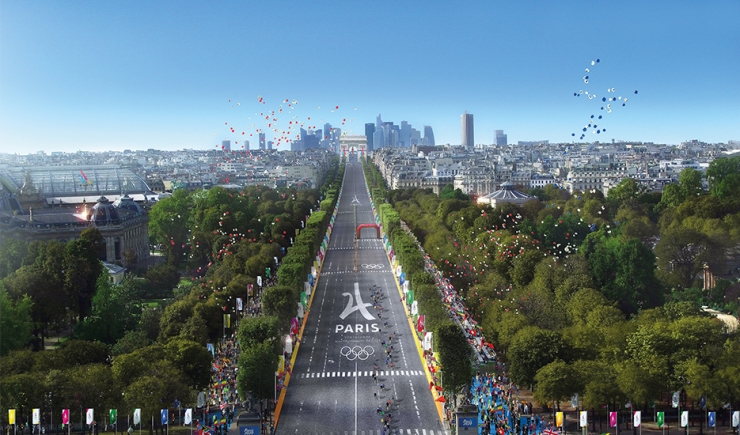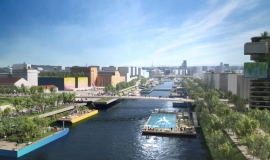The organisation of the Olympic and Paralympic Games is a great sports adventure which also gives a strong impetus to public policies. The 2024 Paris Olympics are a tremendous lever for Grand Paris’ urban development which is hugely beneficial to the population.

After having worked on the Paris bids for the 1992, 2008 and 2012 Olympic Games, Apur naturally launched into the Paris 2024 project. The present study gives an account of work carried out by the agency which has contributed to the bid since 2015, notably on the heritage section.
The context changed for Paris’ 2024 bid for the Games. The IOC produced a 2020 schedule which asks cities to base development more on existing sites and projects already underway. In the meantime some wonderful achievements have been accomplished such as the Jean Bouin Stadium, Parc des Princes, the building of the Saint-Quentin en Yvelines velodrome, U Arena and the Vaires-sur-Marne Water Sports Centre. The level of facilities has been greatly improved meaning that 95% of the Paris 2024 competition sites exist already or will be temporary. Nevertheless the impact should not be underestimated, the urban and non-tangible heritage will be enormous.
In particular, work to reinforce links between Paris and Seine Saint-Denis has begun in earnest. Two major urban programmes will come into existence: the Olympic and Paralympic Village at Pleyel on the Seine embankment and the Media Village at Dugny-Le Bourget. Together they will form two new mixed areas close to new Grand Paris train stations. Heritage in the form of sports facilities involve the construction of an Olympic aquatic centre, Arena 2 and the renovation of sports facilities nearby to serve as training sites.
The first part of the study presents the spatio-temporal coherence of sites with Grand Paris urban development. The second part shows the thinking behind the choice of sites, which centre around direct advantages for populations. This is particularly the case for the various sites studied for the Olympic and Paralympic Village and the Media Village.
The third and last part deals with work done by Apur in the context of measures taken to accompany the Games. These have been carried out in closes liaison with local authority departments responsible for the water-sports sites, the Saint-Denis Canal, green belt sports curcuits, facilities less than 5 minutes from Paris and cycle paths in Paris and Saint-Denis.
These urban and pubic space projects have all been worked on with special attention given to their exemplary approach to a metropolitan city which is adapting to climate change and developing in an inclusive way.
Paris 2024’s non-tangible heritage has already begun. It is a long term process which started during the initial bid by developing a society which is more sports active, more integrated, more united and an environmental example showing a new way to build for and organise the Games. To understand this vision of the Games proposed by Paris 2024 based on the culture of sharing, passion and common sense, one can consult the online documents on the site: www.paris2024.org
The organisation of the Olympic and Paralympic Games is a great sports adventure and also a factor for social cohesion and a powerful accelerator for public policies.

